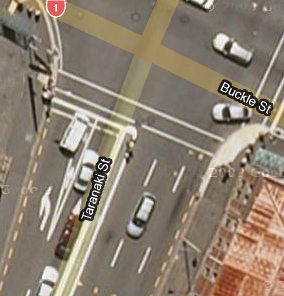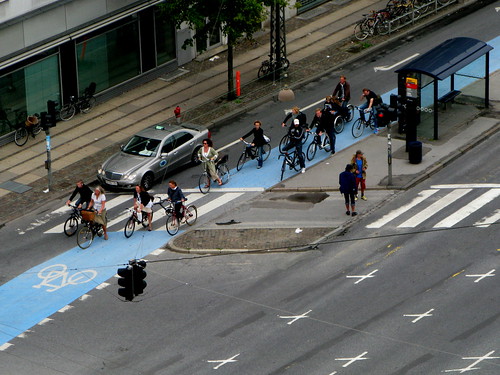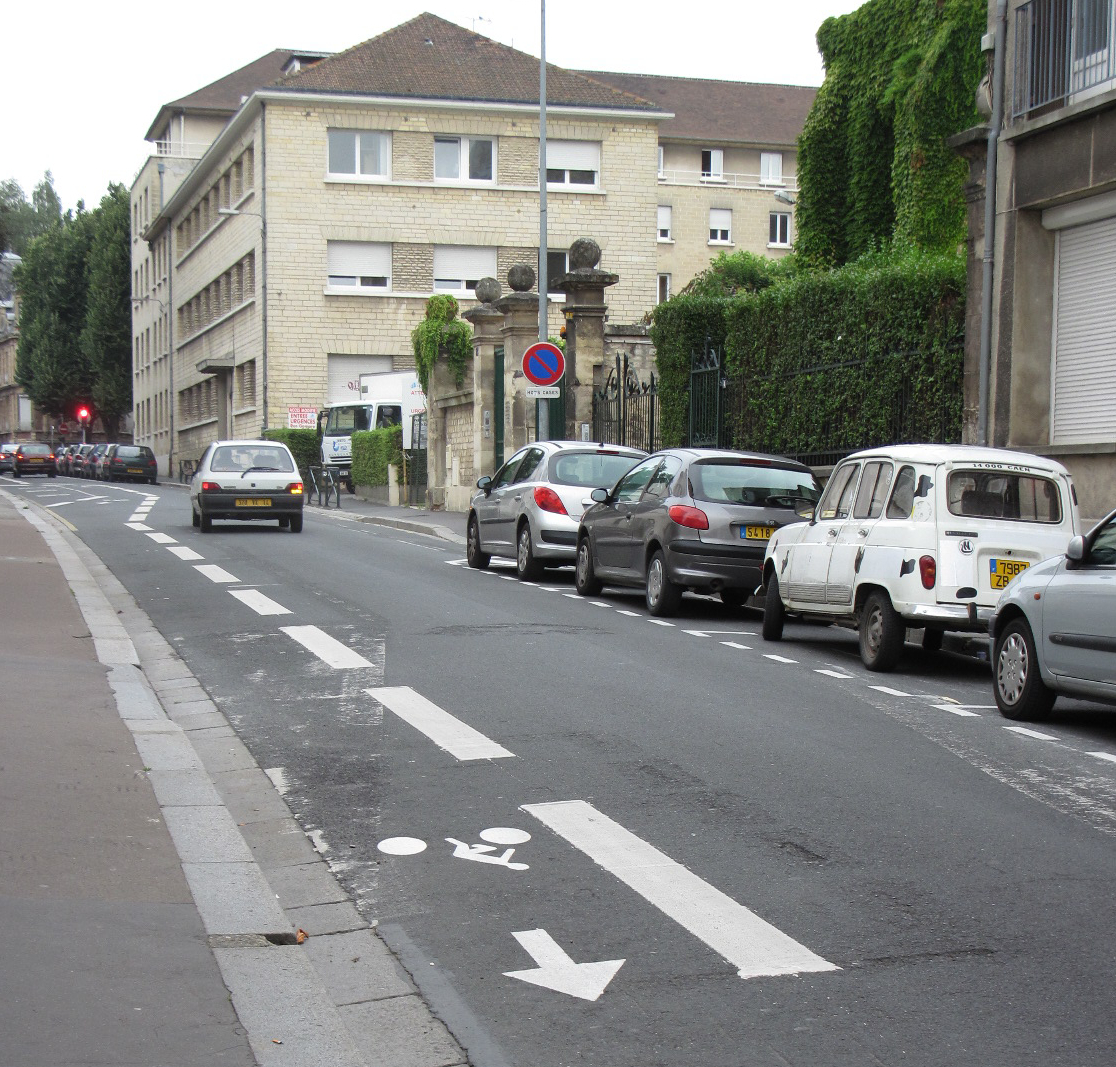As any cyclist is aware, paint on a road can be a life saver, very scarey or simply humorous – as those travelling the shortest cycle lane in Britain would know. New Zealand seems to be very conservative regarding giving cyclists space on the road – let alone making road marks which legitimise them. We have very few examples of innovation in road markings for cyclists, and even fewer that enable cyclists to be equal partners with motorised vehicles on the road. The Gisborne District Council (via their Cycling Advisory Group (CAG)) have apparently trialed new road markings in an attempt to make roundabouts safer (first trialed on corner of Lytton and Gladstone Road in April 2010) – but it’s hard to find an image on the internet – any clues of where please let us know …
So here’s a quick survey of the current state of road markings which aim to help the life of cyclists. The most common is of course the Curbside Exclusive Cycle Lane, which in New Zealand usually sets up most cyclists for a good “dooring” – the term I’ve just discovered is what happens when a car door is opened as you pass it – but here’s a way to avoid that …
Melbourne has a nice pdf devoted to the cause of Cycle Lanes (with helpful research – as does this pdf), and includes advocating for exclusive cycle lanes to the right of exclusive left turning lanes – like the atrophied ones we have on the corners of Taranaki and Buckle Streets, and Bunny and Featherston Streets:
They should really be more like this …
Nottinghamshire County Council also has some helpful hints for the Wellington City Council to help them get these things right.
The Melbourne guys note that: “The width of the kerbside lane had a very significant effect on the clearance that drivers gave to cyclists they overtook.” – they also include an image of a very snazzy-looking cycle lane markings for corners (well I think that’s what it’s for!).
They say: “The purposes of the symbol are to raise the consciousness car drivers to the presence of cyclists and to alert bike riders to the presence of a better quality lane to assist their route selection.” Vancouver also have a helpful webpage with the symbols they use on cycle lanes.
There’s quite a few people who firmly believe in Cycle Lanes separate from car lanes – for the obvious reason that a ton of metal will always come off better in a collision with a cyclist.
Advanced Cycle Stop Lines (also known as Bike Boxes and ASLs) are beginning to appear in an ad hoc way around our cities – even Dunedin has some. Best practice suggests that these should be used in conjunction with some form of cycle lane for filtering traffic – that’s basically to say that if cyclist can’t get to the Bike Box then they are pretty much useless. Why they aren’t used at every intersection is inexplicable.
Like all good things, Bike Boxes have the added advantage that they also improve pedestrian safety – as there is more time for pedestrians to take evasive action when cars try to plow them over …
Contra-flow cycle lanes (e.g. Luton Borough Council, Rutland County Council and Devon County Council) are used to allow cyclists to travel in the direction opposite to cars.
Cycling England have published a guide to help road painters, and roading departments in city councils get the design of Contra-flow cycling right.
Shared lane marking or “sharrows” (a contraction of shared and arrow) bike markings “indicate to a motorist and a bicyclist that the roadways has a shared travel lane.” Apparently they are Canadian in origin – Montreal I think. The idea disturbs me – but apparently they do improve cycle safety by creating awareness and legitimising cyclists using the full width of a road. As a cyclist (and I guess a car driver) the sharrow indicates where on the road you are meant to be.
Of course one of the key hurdles to deal with when painting space for cyclists on road is to make cycle lanes continuous, and to be assertive with the markings to let other (bigger) road users remember that cyclists need to be able to move across a road to turn right, or cross an intersection. This image of Newbury in Berkshire seems to make the right point:
So what about NZ, or more specifically Wellington? The WCC identifies: Dedicated cycle lanes, Shared footpaths, Clearways and Bus lanes as the mechanisms the city uses to “welcome” cyclists … and the NZTA? Well at NZTA vehicle=car, and cycling information stresses the danger of riding a bike on the road – despite cycling health benefits. Reading the NZTA site I learnt that if I’m a beginner cyclist to use quieter roads, and as a cyclist more generally I need to be aware that car drivers might not see me, that I need to wear a helmet, and hi-vis gear. The cycling page concludes with crash statistics! Hurrah for NZTA …














Leave a Reply